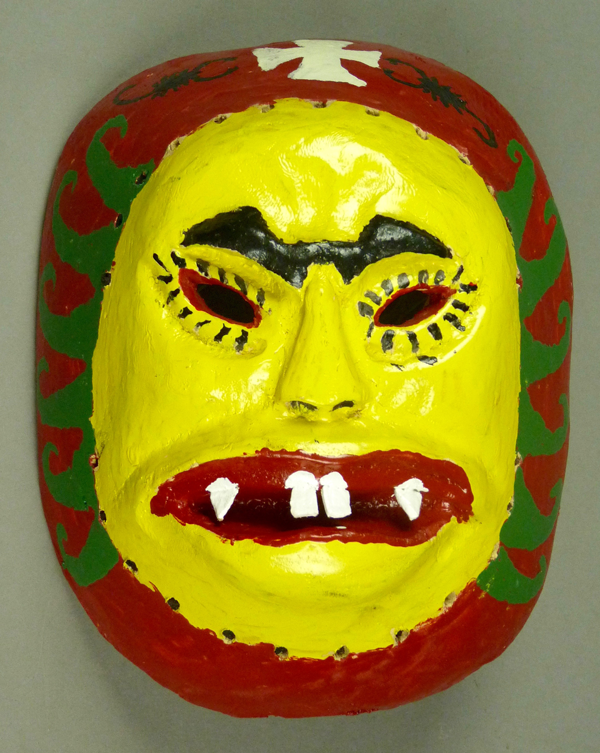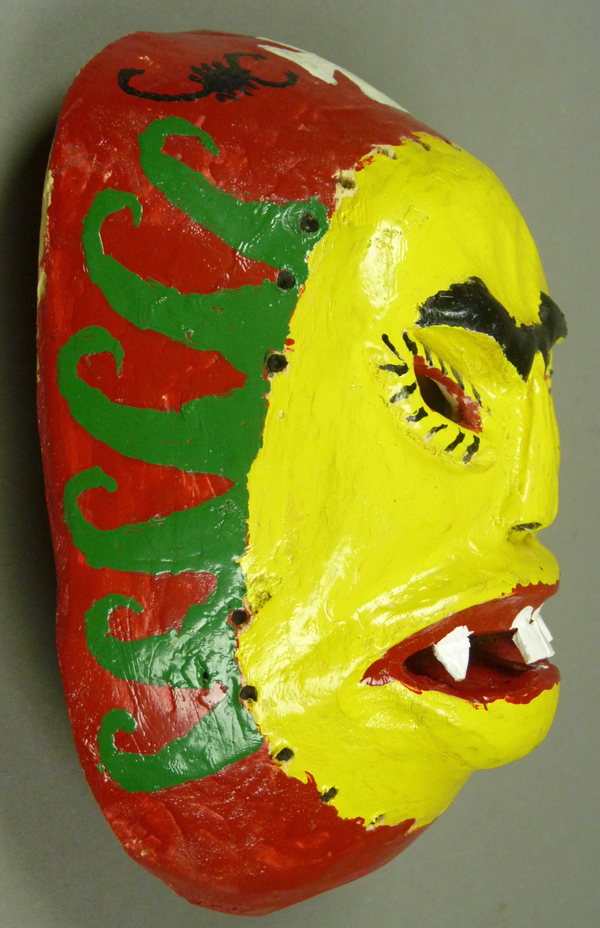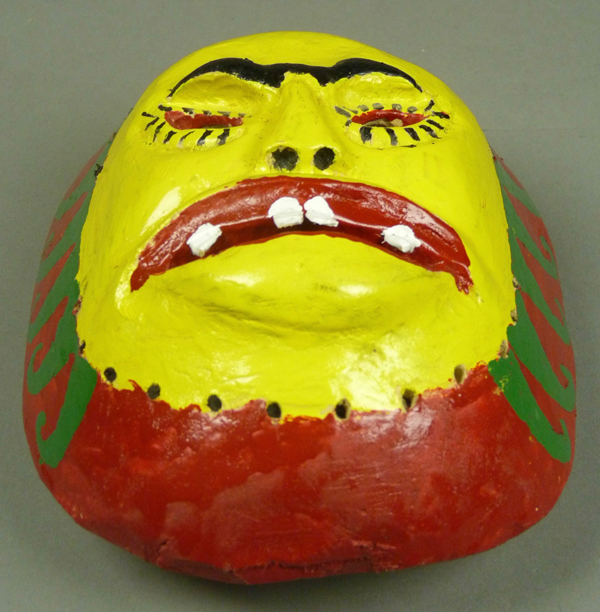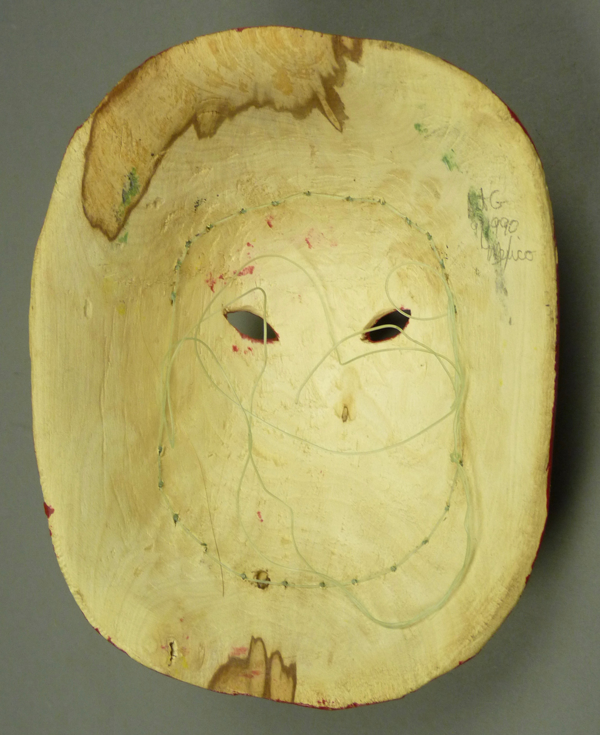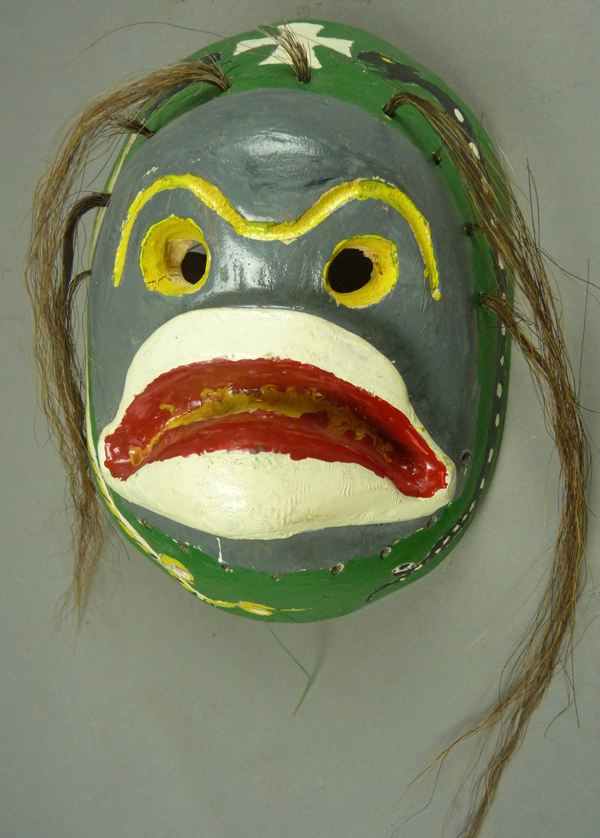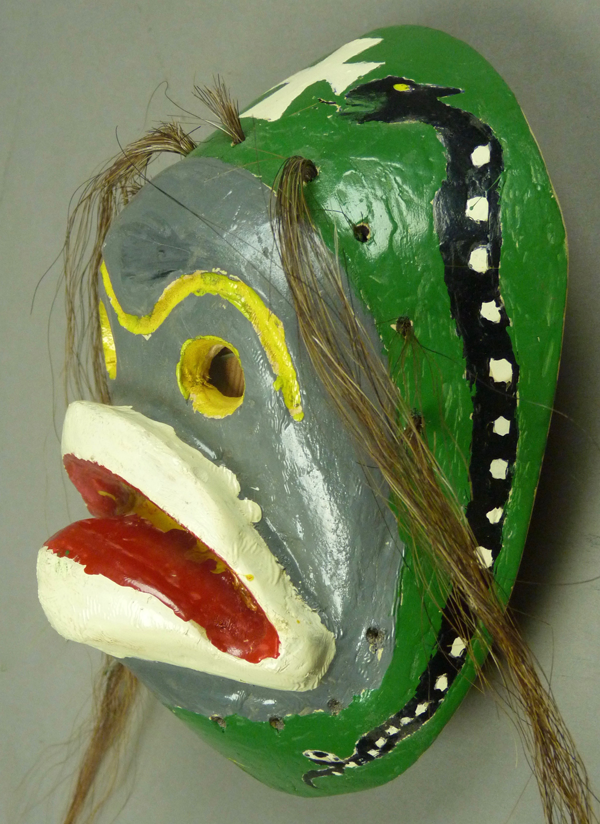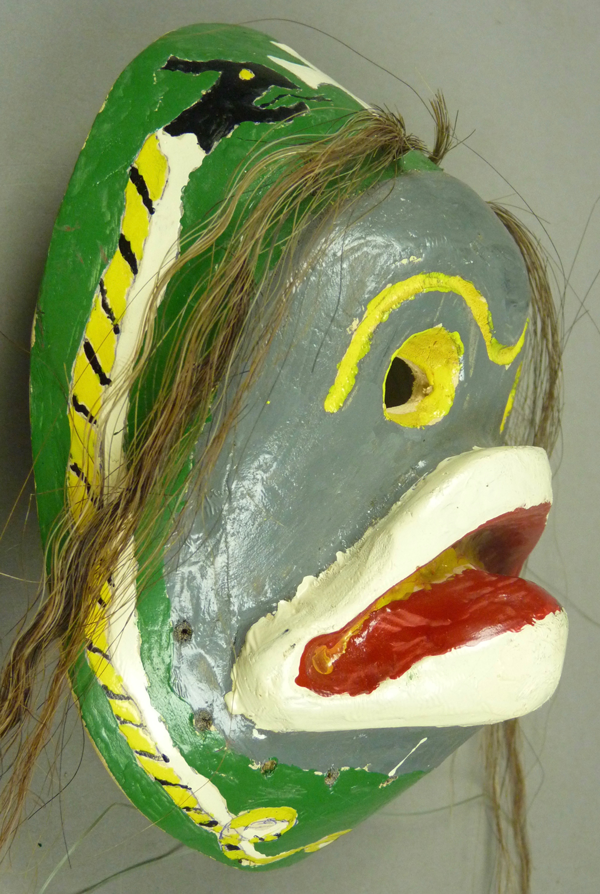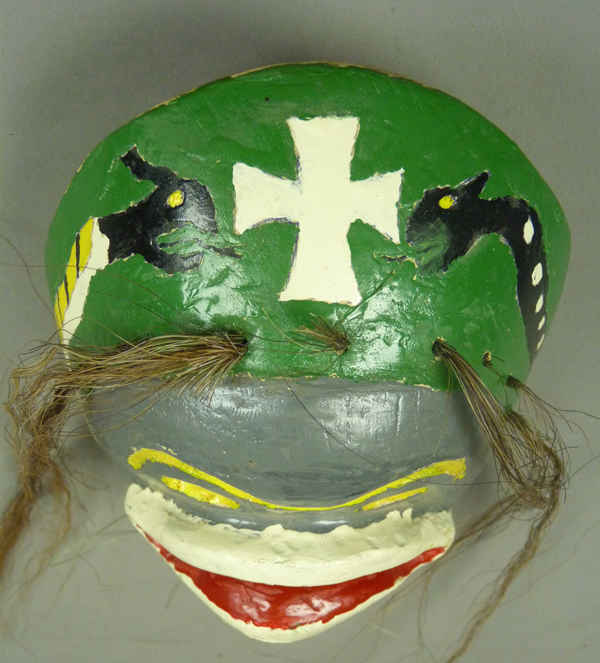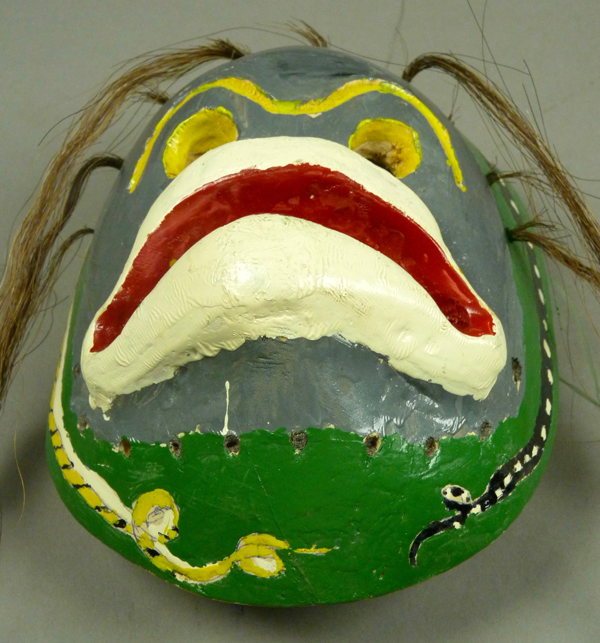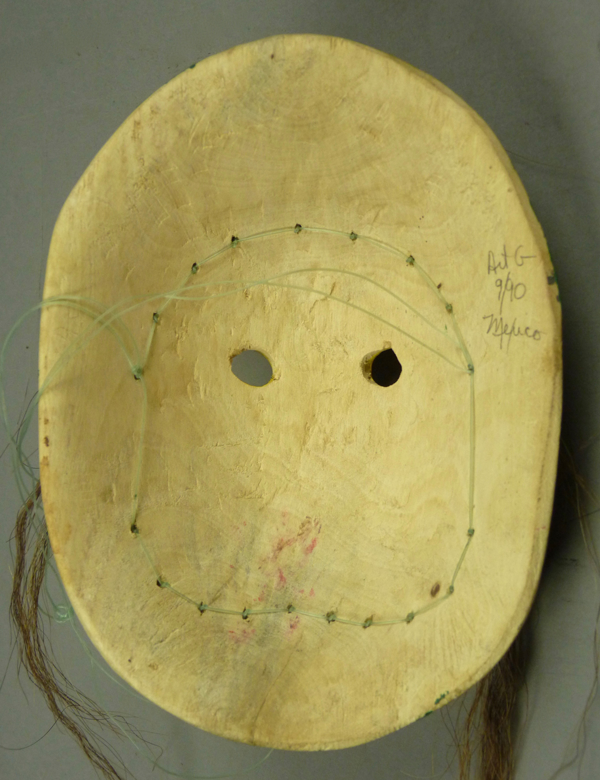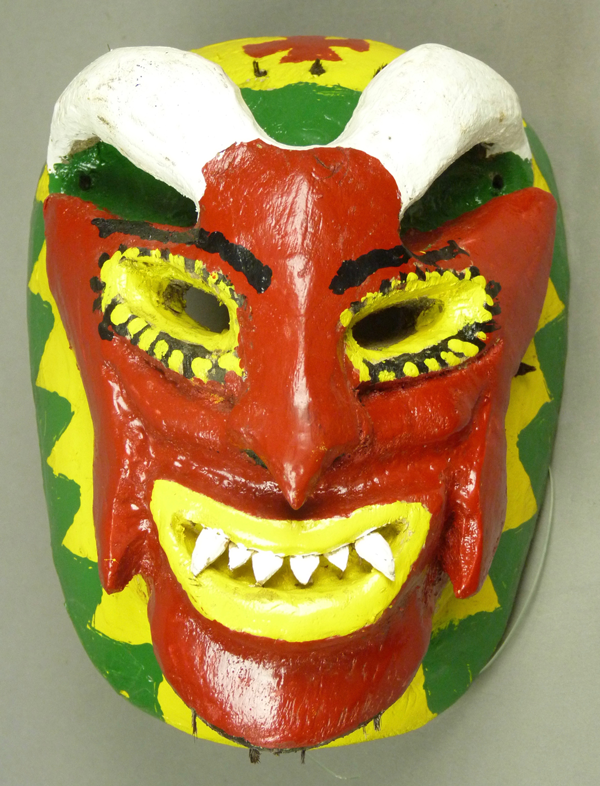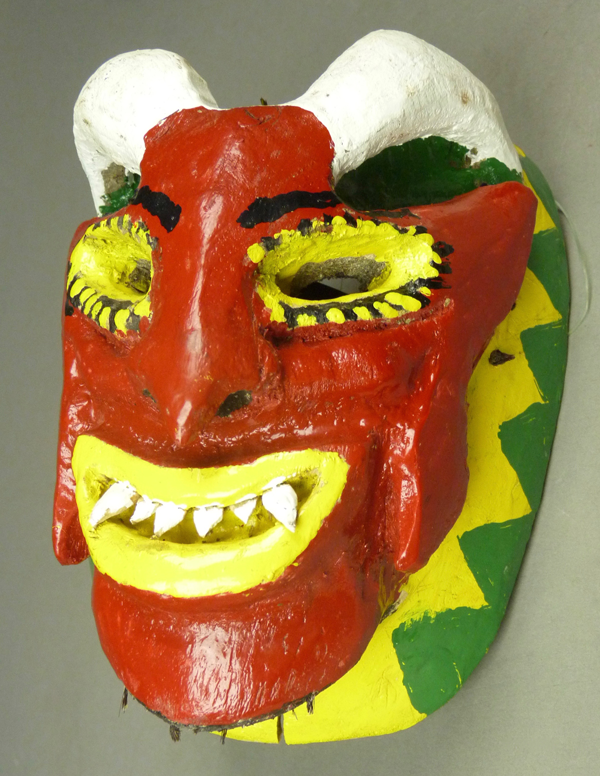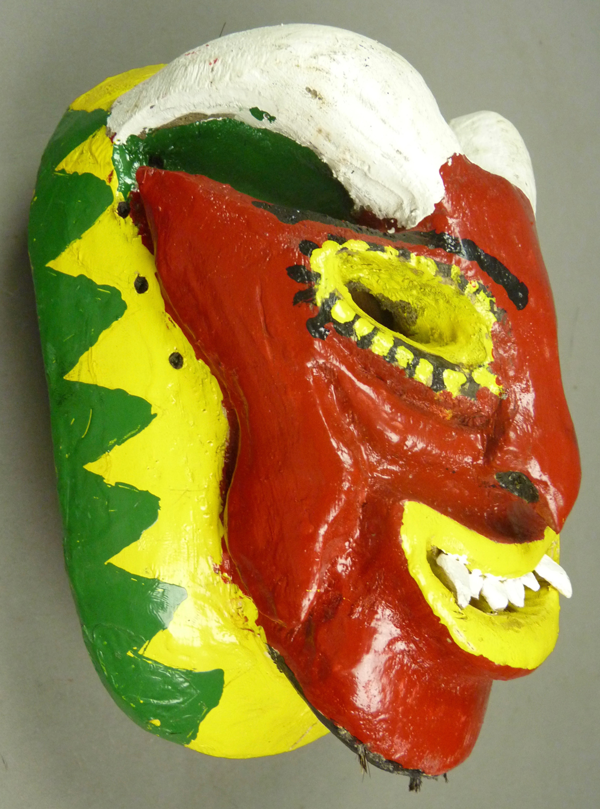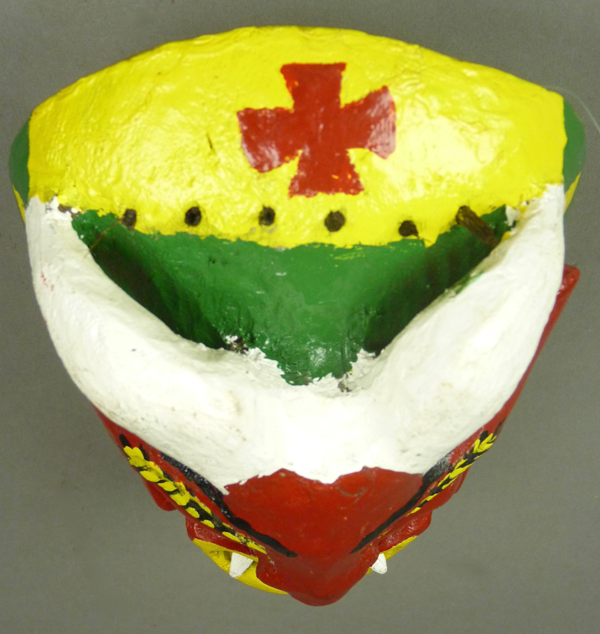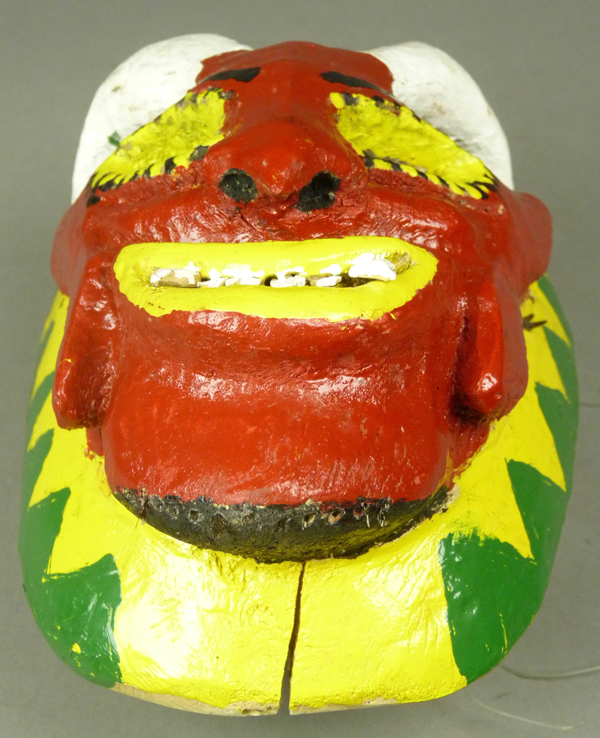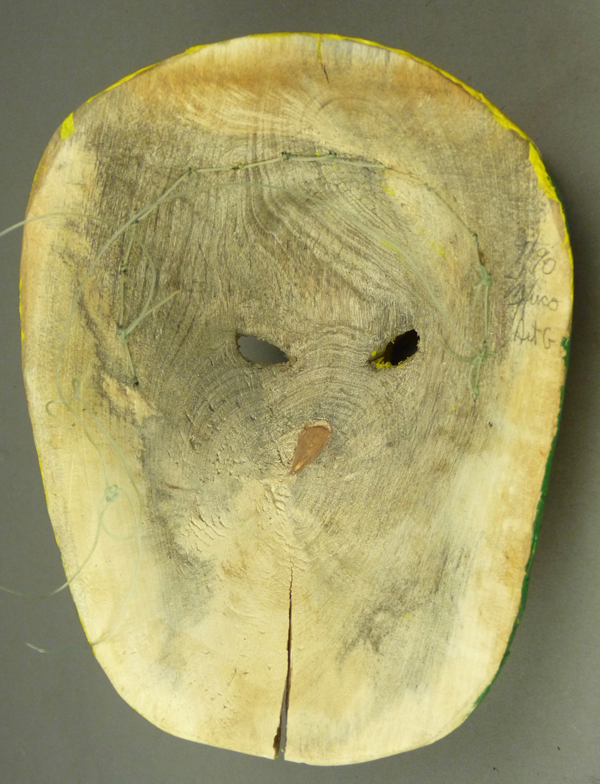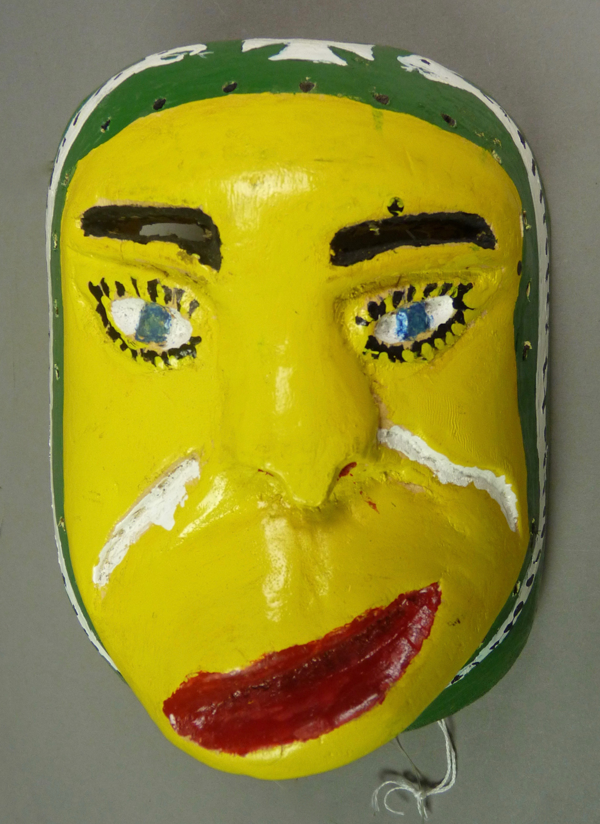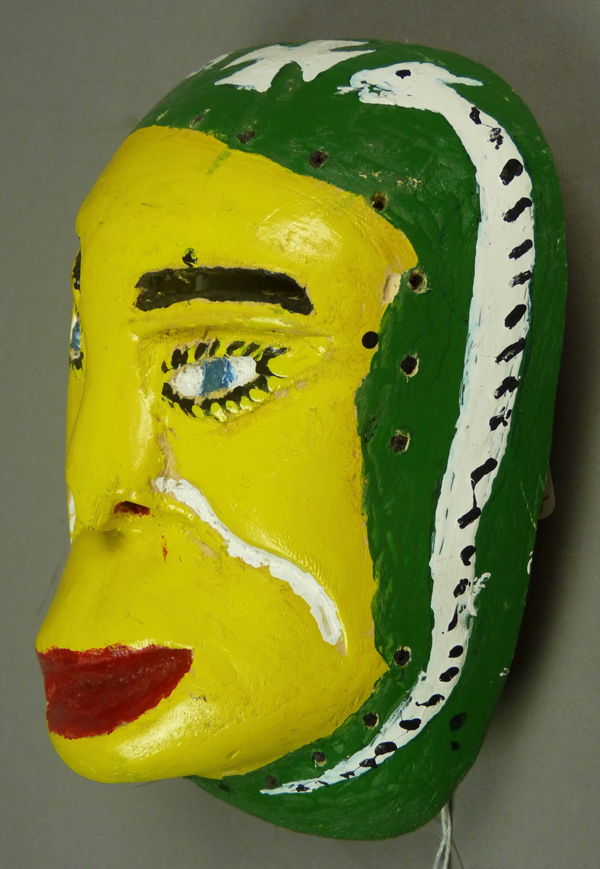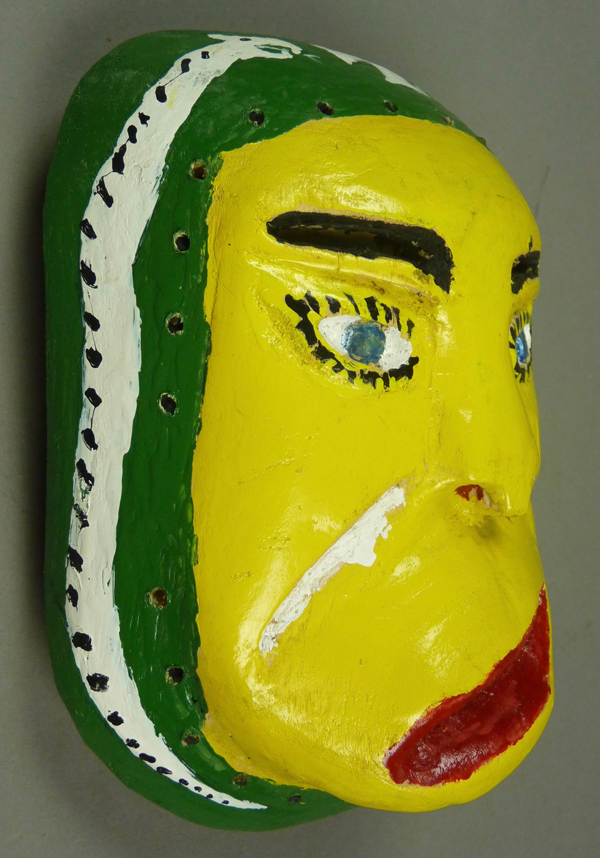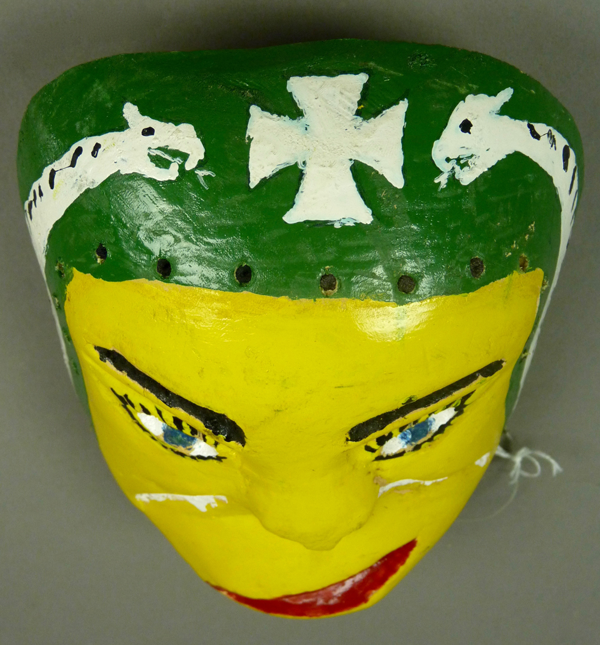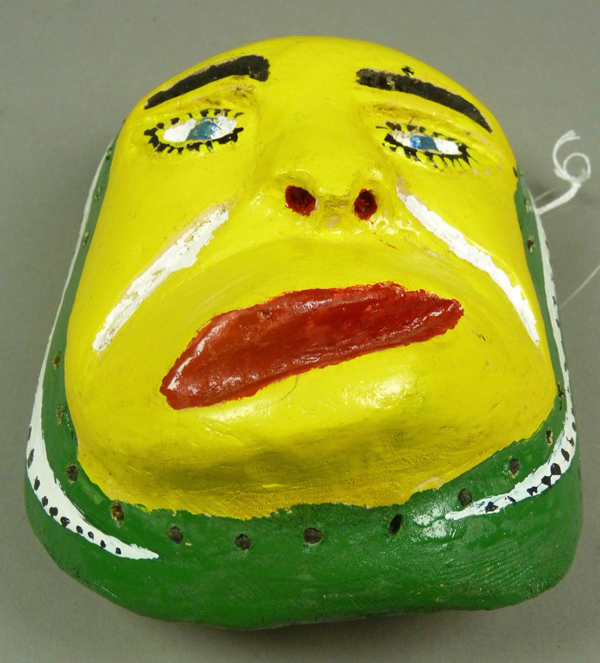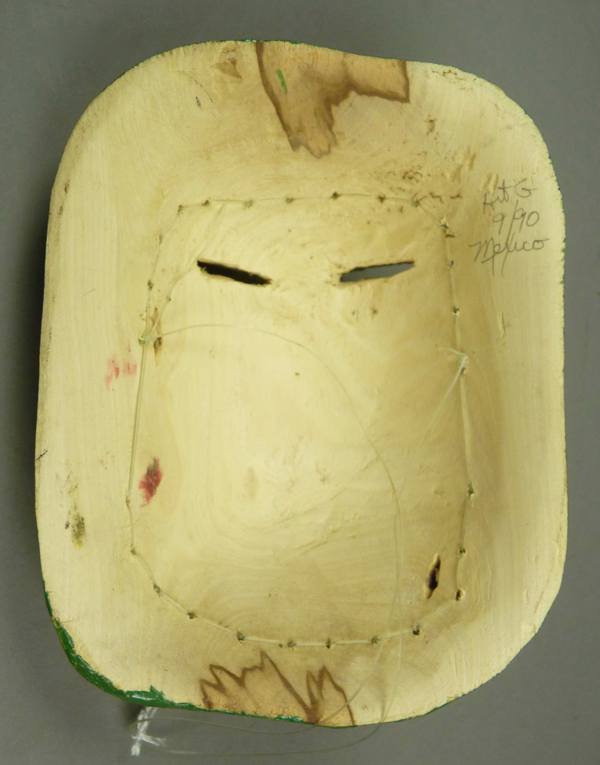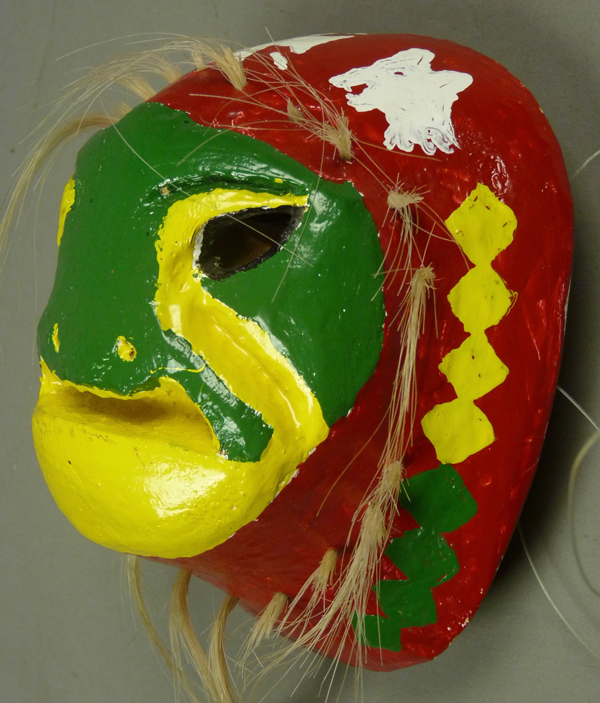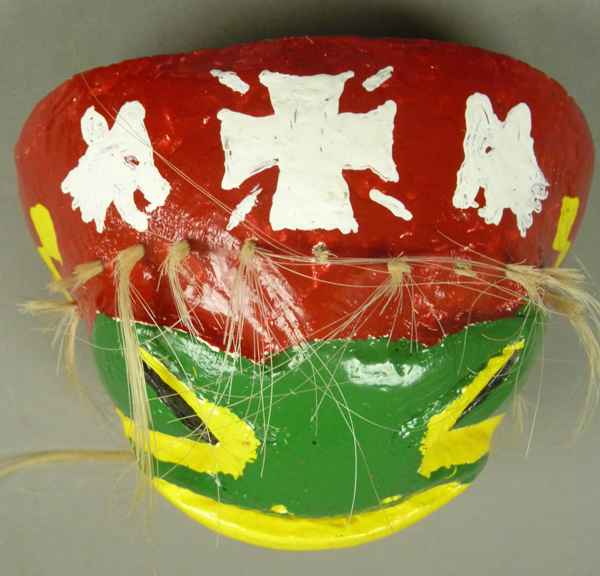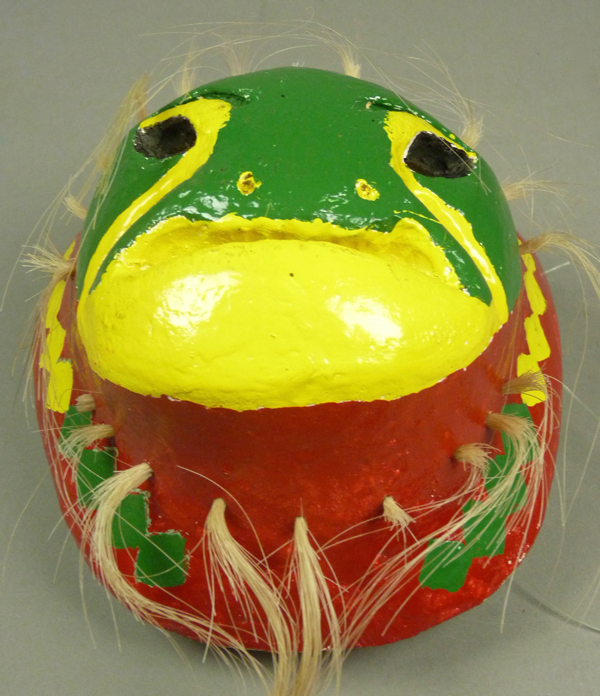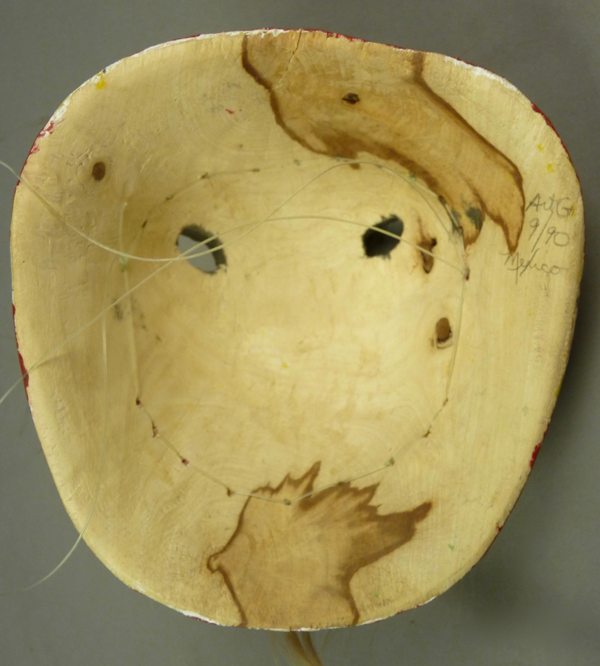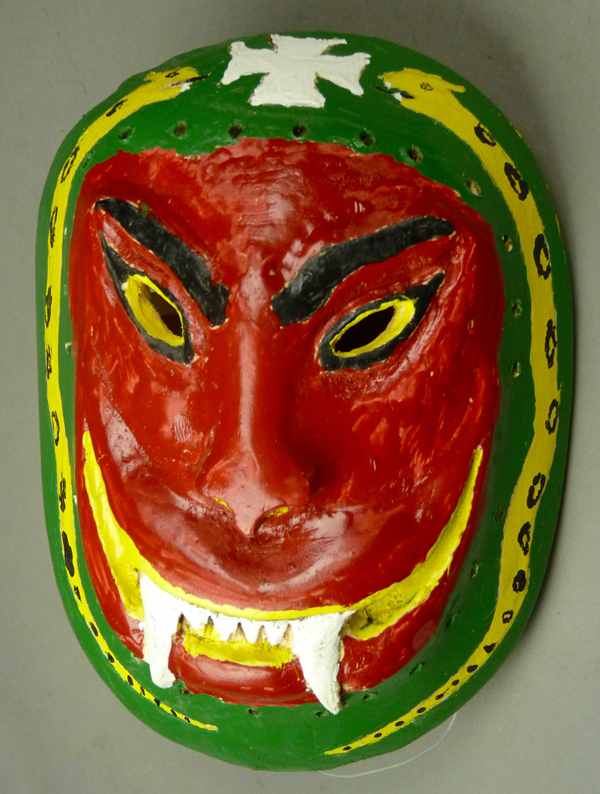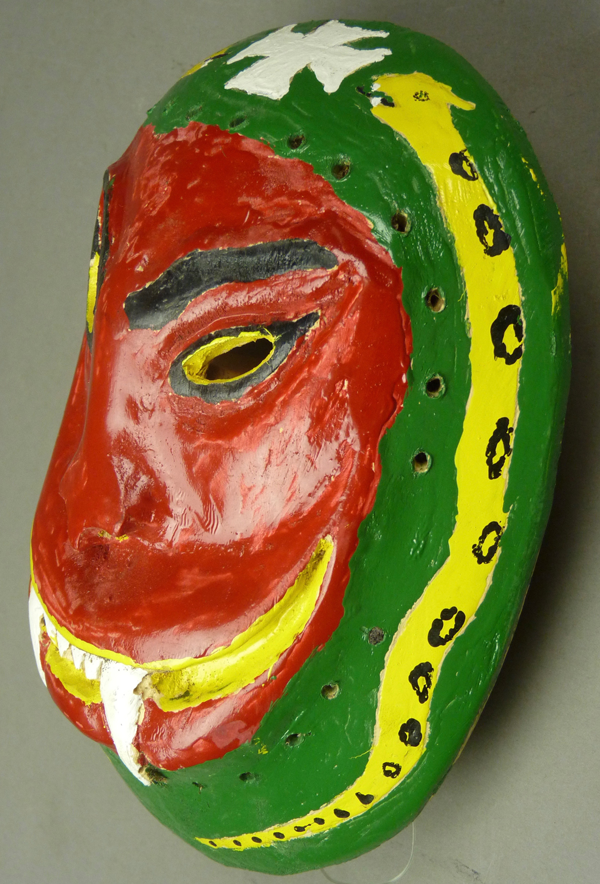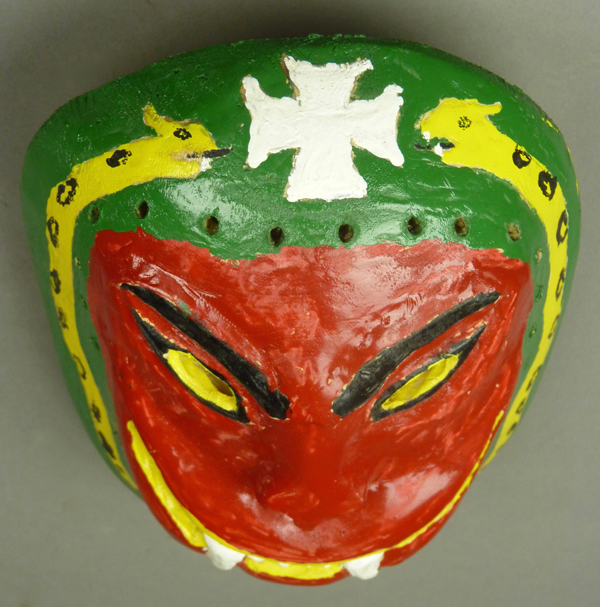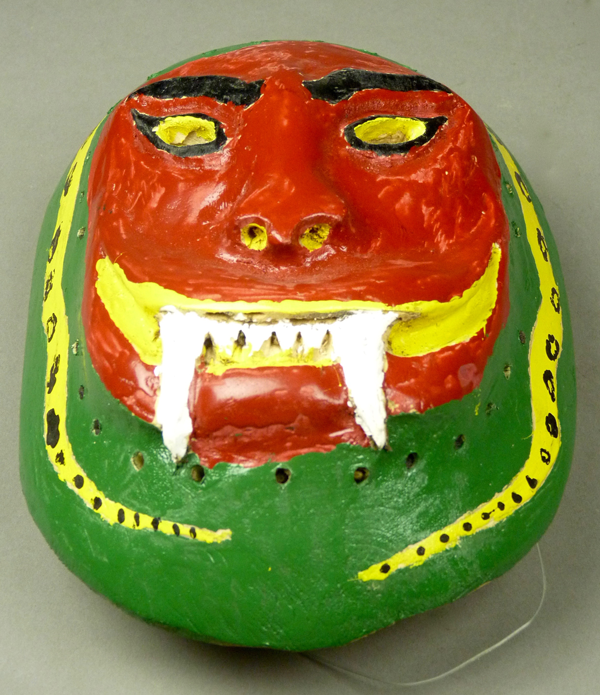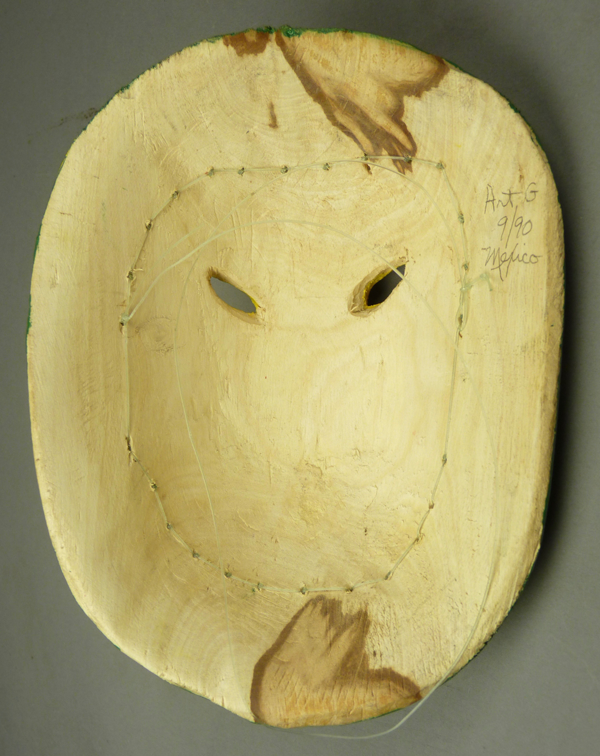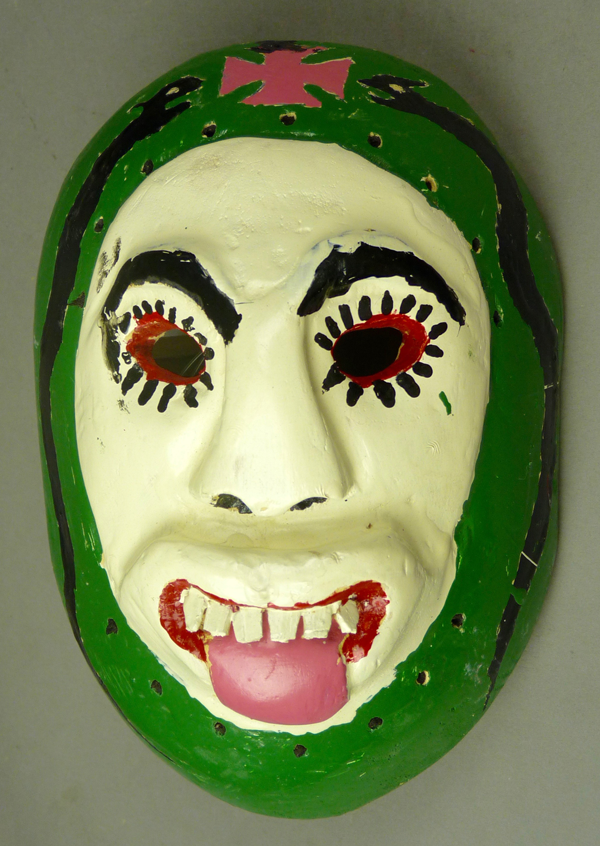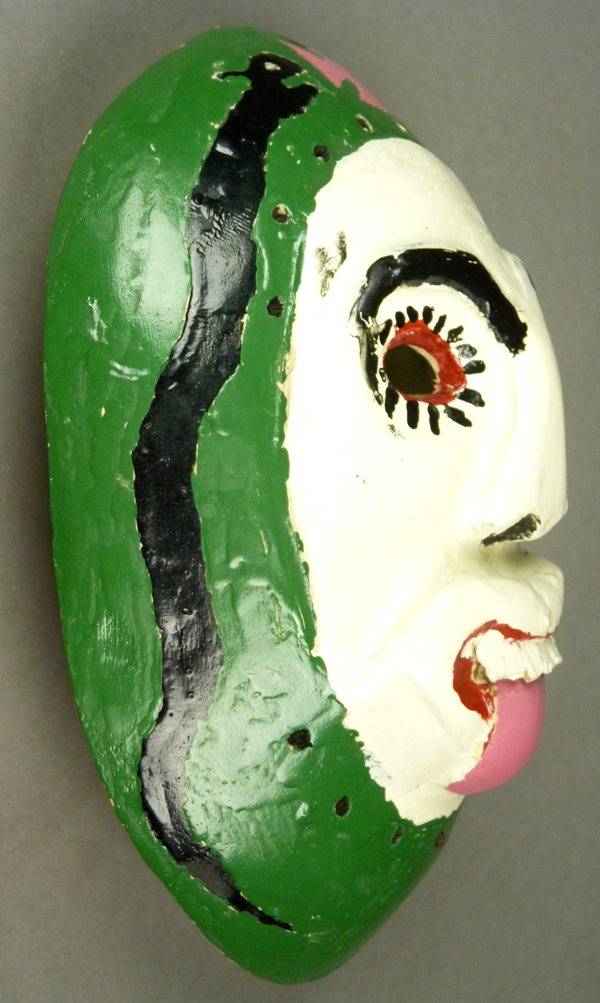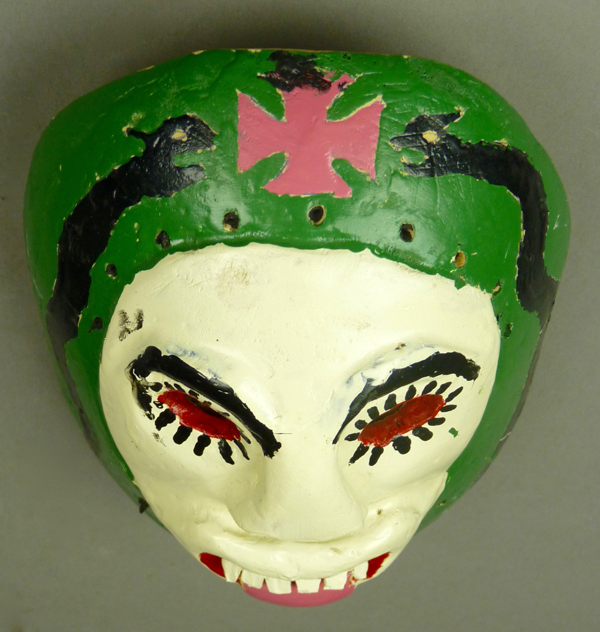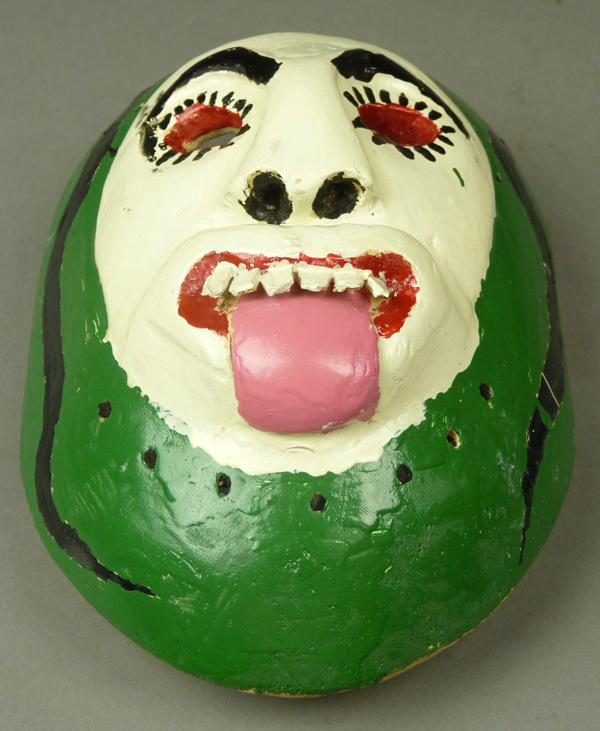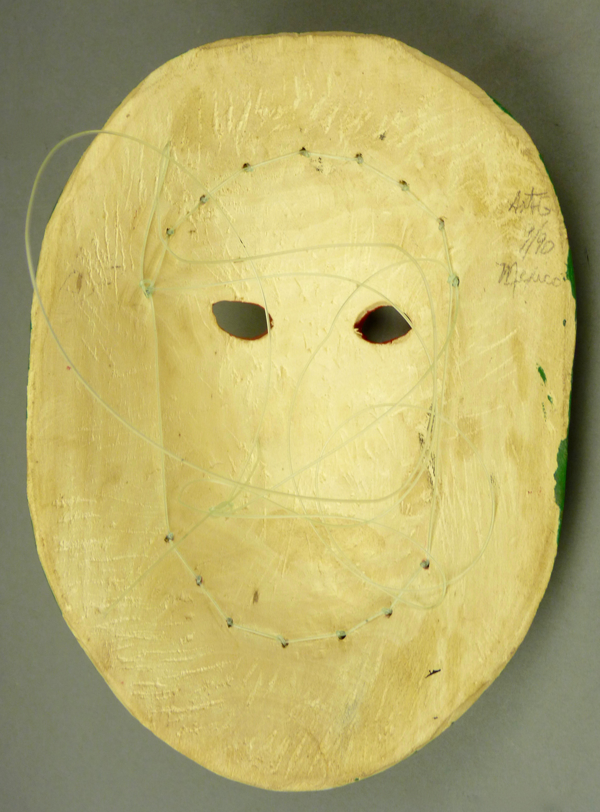In 2010 I purchased 14 masks from Tom Kolaz, 7 by Guadalupe Vadon Ochoa, which we saw last week, and 7 more by “Art G” (Aturo Garcia Gariola), which I will show you today. Both carvers worked in Sinaloa, but the later masks of Guadalupe are plain and utilitarian in their design, while those of Arturo are alarmingly vivid, as you will see, actually shocking when viewed within the Sinaloa Mayo context that we have been surveying. They are also more elaborately carved.
These masks were probably collected directly from the artist by Barney Burns and Mahina Drees in September of 1990, which was 20 years before I bought them from Tom. It was his impression that Arturo and Guadalupe had long since died. The masks by Arturo are mildly soiled on their backs, as if there might have been limited ceremonial use, but all have monofilament hanging lines, which don’t seem appropriate for dance use. Most of the hair bundles were destroyed by insects after the masks were collected by Barney and Mahina.
I was initially put off by the garish nature of this group of masks. Then, when I made the effort to focus on them, one by one and from various angles, I was surprised to discover how much I liked them. I will begin with one of the most vivid masks, although you may well have other nominations for this title.
The halo of green flames around the face reminds one of imagery usually associated with the Sun, but the relief carved bat straddling the eyebrows, an obvious creature of the night, makes one think of the Moon. Either way, this is depicted as an angry or menacing face.
Hand painted scorpions flank the freehand forehead cross. In fact, all of the painting appears to be freehand, without guidelines, and is impressive in the quality of imagery that the artist sketches with such an informal brush. He appears to have painted to suit himself.
This mask would appear to utilize pre-Conquest imagery.
This mask is 7 inches tall, 5½ inches wide, and 2 inches deep.
The notation by Mahina reads “Art G, 9/1990, Mexico.
The next mask, equally mysterious, has a face like a catfish, or is it a gorilla?
The majority of today’s masks have attractively painted serpents flanking the forehead cross.
On this mask, the snakes’ tails coil, an unusual and clever touch for masks of this area.
Some of the hair remains on this mask, but it is greatly tattered.
The coiled tails of the snakes are particularly well seen in the next photo.
This mask is 7 inches tall, 5 inches wide, and 2¼ inches deep.
The back is carefully smoothed and mildly soiled. It was made to be danced, whether it was actually danced or not.
The third of these masks depicts a devil. And in fact this is the devil that was described by the European missionaries, one with the horns and ears of a goat.
It may seem strange that a Mayo Pascola mask would have the face of a devil. However Yaqui teachings claim that the first Pascola Dancer was the Devil’s son. The Mayo Indians may share this belief.
Scraps of the hair bundles that formed the beard are still present on the chin of this mask. What I really want to demonstrate in these angle photos is the degree of effort that Arturo invested in carving the ears of a goat on this mask.
The border design of green triangles has the effect of creating a ring of yellow flames around this devil’s face (or vice versa).
The chin view shows those goat’s ears again. The wood of the chin is cracked.
This mask is 7 inches tall, 5½ inches wide, and 3 inches deep.
This is probably an undanced back.
The next mask has a vivid yellow face, and I have no idea why. Is this the Moon? The openings for vision are hidden in the painted eyebrows.
This mysterious mask has a twisted, distorted face, with an ironic smile.
The faces of the snakes are very effectively painted, probably with crude brushes.
The lines in the face suggest that one is invited to view this as an ancient personage.
I take photos from all angles, sometimes simply to document the lack of any special feature, as is the case for this chin.
This mask is 6¾ inches tall, 5 inches wide, and 2 inches deep.
All of these masks have the same pencil inscription.
I don’t know what animal this mask is meant to represent either.
Maybe this is a frog or a lizard?
The green and yellow squares form a nice rim design.
Canine heads flank the forehead cross.
This mask is 6 inches tall, 5¾ inches wide, and 3 inches deep.
The backs are all the same.
Here is another devil, but this one lacks goat’s ears and horns.
This mask is simple in design, but powerful, alarming.
I like the handmade quality of the horned serpents.
I wonder what these masks would look like with decent hair.
This mask is 7¼ inches tall, 5½ inches wide, and 2 inches deep.
Another typical back.
The last mask could represent a clown or a demon, I suppose.
Look at the manner of joining the relief carved brows to the bridge of the nose. This is highly stylized, and bolder than on any of the other six masks. In other words, this carver does not appear to approach his masks in a formulaic manner; each is a new creation.
The curled tongue is also carefully carved in relief.
After the six that came before, I have a hard time imaging that one might be modeled on a more ordinary being. I believe that all of them portray supernatural beings.
This mask is 7 inches tall, 4¾ inches wide, and 2 inches deep.
The back of this mask is particularly soiled, as if it really was danced.
Next week we will examine the masks of Tirso Buitimea, another Sinaloa carver.
Bryan Stevens

